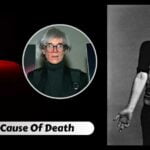Jacqueline Lee “Jackie” Kennedy Onassis, the former first lady of the United States, died at the age of 64 after a courageous battle with non-Hodgkin lymphoma. It’s been 29 years since we lost the cultural image of grace, but medical science has come a long way since then, allowing for better treatment and longer survival rates for patients.
John F. Kennedy’s widow, a chic New York native, became a “symbol of strength for a traumatized nation” after his killing in 1953. Since the death of the famous mother of three, great progress has been made in understanding the origins of non-Hodgkin lymphoma as well as methods for preventing and treating the disease.
Thankfully, advances in treatment and the creation of screening techniques have allowed for more lives to be saved. In retrospect, doctors first saw a large lymph node in Jackie Kennedy’s groin area in November 1993. Kennedy is remembered for her efforts to restore the White House to its original grandeur and for founding the White House Historical Association.
She had been engaged in a fox hunt in Middleburg, Virginia when she was thrown from her horse, where doctors discovered the enlarged lymph node. An enlarged lymph node was initially attributed to an infection for Kennedy.
Please follow the link and read the following article for more information on illness:
- Richard Gere Illness And Health Update Battling Pneumonia On Wife’s Birthday!!
- Stetson Bennett Illness Raises Concerns, But His Spirit Remains Strong!!
In January 1994, however, she started showing additional symptoms that were consistent with a more serious condition. The East Hampton, New York equestrienne not only experienced a swollen groin lymph node but also a swollen neck lymph node and a searing abdominal pain.
What Jacqueline Kennedy Onassis Was Diagnosed With and Her Fight?
In 1994, when she was diagnosed with non-Hodgkin’s lymphoma, the news shocked the entire globe. She fought heroically against this disease, a cancer of the lymphatic system and white blood cells. Her private battle with the illness cast a pall on her dazzling public persona.
NHL: What Does It Mean?
The term “non-Hodgkin lymphoma” is used to describe a group of cancers, not just one. According to Dr. Julie Vose, chief of hematology/oncology at the University of Nebraska Medical Center, “Non-Hodgkin lymphoma is a big category,” as she previously stated to SurvivorNet.
Lymphocytes, which are part of your immune system, are the starting point for all non-Hodgkin lymphomas. The doctors classify these malignancies further by the type of lymphocytes from which they originate, either B cells or T cells. The type of treatment you receive for lymphoma depends on whether the cancer is found in B cells or T cells.
Jackie Kennedy’s non-Hodgkin lymphoma was of an unknown subtype. However, you and your doctor will discuss possible treatments once it has been determined what subtype of non-Hodgkin lymphoma you have.
The kind, location, and aggressiveness of your cancer will determine the course of treatment your doctor prescribes. Before agreeing to a treatment plan recommended by your doctor, be sure you fully grasp the rationale behind the recommendation and the potential benefits of the treatment.
Thankfully, the condition and its treatment have received more attention and research since Jackie Kennedy’s death. Those who have been given a diagnosis of this type of cancer should rest confident that there are treatments available to help them.
Causes and Ways To Treat It
Researchers have yet to determine a cause for the condition. Although its cause is unknown, non-Hodgkin lymphoma is caused by a mutation in the DNA of lymphocytes, a kind of white blood cell. Fear and worry follow a cancer diagnosis even before treatment begins since “the Big C” has historically been a major source of distress.
Anxiety and panic are normal responses to any discovery of cancer, including a lump or other suspected signs or symptoms, as noted by the American Cancer Society. Apprehension (the feeling that something unpleasant is going to happen) may also be caused by a fear of treatment, doctor appointments, and tests.
A cancer patient’s concern after receiving a diagnosis is addressed on their website. The stories we’ve heard over the years have made us fearful, especially as prospects for a “cure” dimmed. These days, remission and more effective therapies are touted rather than a cure for cancer.
Today, oncologists can be found not just in big cities but in towns and cities across the United States. That’s something Jane Fonda is well aware of, and it’s why she’s keeping up with her busy schedule even as she undergoes therapy. We all know that keeping a positive outlook can help our immune system deal with foreign pathogens.
There is substantial evidence of increased anxiety among cancer survivors, which should be taken into account by anyone who has dealt with cancer-related worry. Approximately 20% of the 3370 people who made it through the research indicated moderate to severe depression and anxiety.
These numbers exceeded those seen in studies of the general population’s anxiety levels. Since Jackie Kennedy’s diagnosis, there have been significant advances in treatment. We now have immune-boosting therapies in addition to radiation therapy, stem cell transplantation, and chemotherapy.
Some patients with non-Hodgkin lymphoma (NHL) are being helped by a sort of immunotherapy called chimeric antigen receptor T-cell treatment. In the future, researchers hope to have even more effective tools to use against this and other types of cancer, so hope is not lost.



